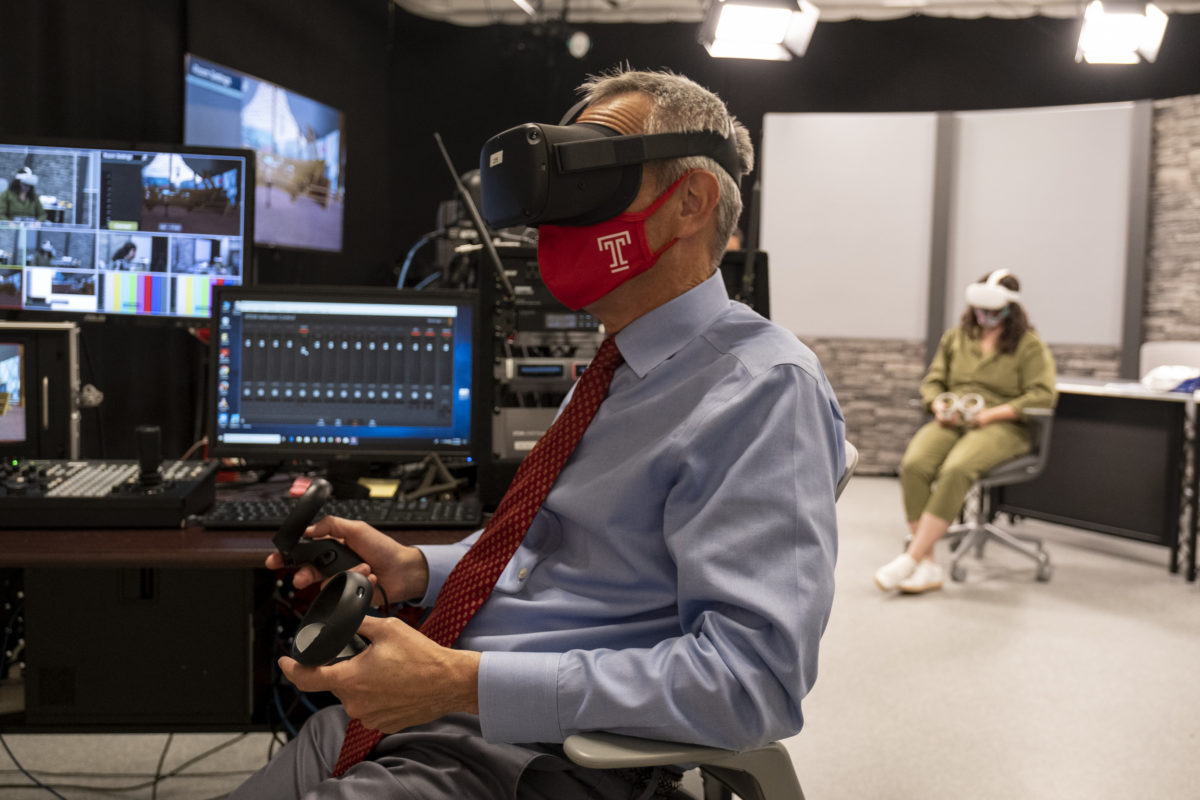As technology evolves, virtual reality and augmented reality have become more ubiquitous in everyday life.
Once reserved for high-price experiences, exclusive entertainment and sci-fi-like scenarios, the technology has become more accessible, and we’ve see VR and AR being used in very practical ways: workforce development training, healthcare, transit and higher education.
On last week’s episode of “Media Inside Out,” a talk show diving into modern media and technology, this reporter joined Sherri Hope Culver, who is a Temple University professor and director of the Center for Media and Information Literacy, as well as University of Pennsylvania cognitive neuroscience professor Dr. H. Branch Coslett, to talk about the ways in which we see VR and AR used in society.
The science is pretty clear, Coslett told us: Your brain treats the world that you see as if it’s real.
In his line of work, where VR is being used in medical research, he’s seen patients who have lost a limb still react with pain when a fake limb is stabbed or injured. They have all the physiological responses that they would if they still had the limb.
“Brains are really good at changing in response to what we see,” he said.
Check out the conversation below:
[vimeo 623467304 w=640 h=360]
Before you go...
Please consider supporting Technical.ly to keep our independent journalism strong. Unlike most business-focused media outlets, we don’t have a paywall. Instead, we count on your personal and organizational support.
3 ways to support our work:- Contribute to the Journalism Fund. Charitable giving ensures our information remains free and accessible for residents to discover workforce programs and entrepreneurship pathways. This includes philanthropic grants and individual tax-deductible donations from readers like you.
- Use our Preferred Partners. Our directory of vetted providers offers high-quality recommendations for services our readers need, and each referral supports our journalism.
- Use our services. If you need entrepreneurs and tech leaders to buy your services, are seeking technologists to hire or want more professionals to know about your ecosystem, Technical.ly has the biggest and most engaged audience in the mid-Atlantic. We help companies tell their stories and answer big questions to meet and serve our community.
Join our growing Slack community
Join 5,000 tech professionals and entrepreneurs in our community Slack today!

The person charged in the UnitedHealthcare CEO shooting had a ton of tech connections

From rejection to innovation: How I built a tool to beat AI hiring algorithms at their own game

Where are the country’s most vibrant tech and startup communities?



